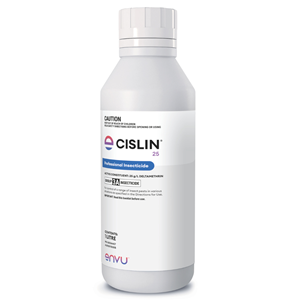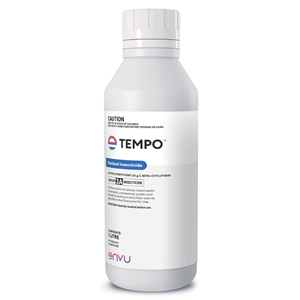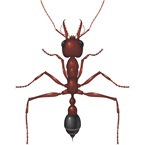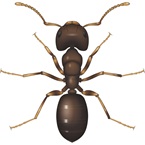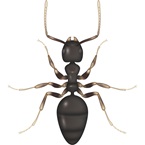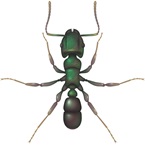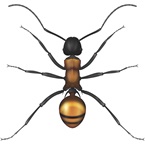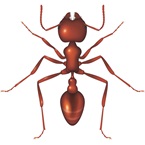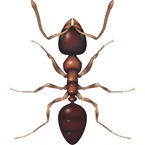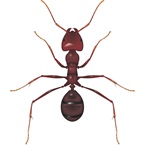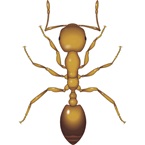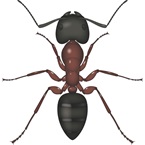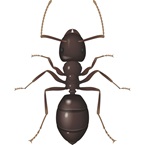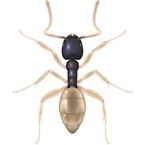Species category: Ant
Scientific name: Pheidole megacephala
Description
The Coastal Brown Ant, also known at the Big Headed Ant is golden brown to brown in colour and is a small ant, typically measuring 1.5 -2.5mm. It is dis distinguished by two raised nodes on pedicel, visible spines on the thorax and 12 segmented antennae that finish with a 3 segmented club.
The workers in the species are characterised by their large, pronounced head, which is disproportionately larger than the rest of the body.
Originally believed to be a native of Africa, this species is common throughout Australia.
This pest is a soil-nesting ant that displaces soil and leaves tell-tale mounds of soil next to the nest opening.
Colonies can be so large that they stretch beyond property boundaries. They are common in urban dwellings but can also displace turf and are a pest on agricultural sites.
Behaviour
This incredibly invasive species often has multiple queens in a colony and quickly achieves the status of a ‘super-colony’.
As the initial colony grows, a process called budding will take place in which a queen and a selection of workers will walk from the nest and establish a new colony in close proximity.
The Coastal Brown Ant forages for fat and oil based foods or proteins such as meats. Insects are a secondary option.
They are not particularly aggressive but have a sting present when under threat; it is not painful for humans.
Risks
Individually, more of a nuisance than a pest, this insect has a tendency to form super-colonies, which are a series of interconnecting nests - a mass-infestation. In these incidences, they displace soil and roots causing lawn and turf problems. Super-colonies have been known to destabilize paving.
Coastal Brown Ants can also be detrimental to agriculture as they encourage the growth of sap-sucking bugs which destroy the plants they inhabit.
These ants disrupt the local ecology by displacing native ant species.
Envu recommends using Maxforce Quantum liquid ant bait to eradicate protein-feeding ants from your home.

